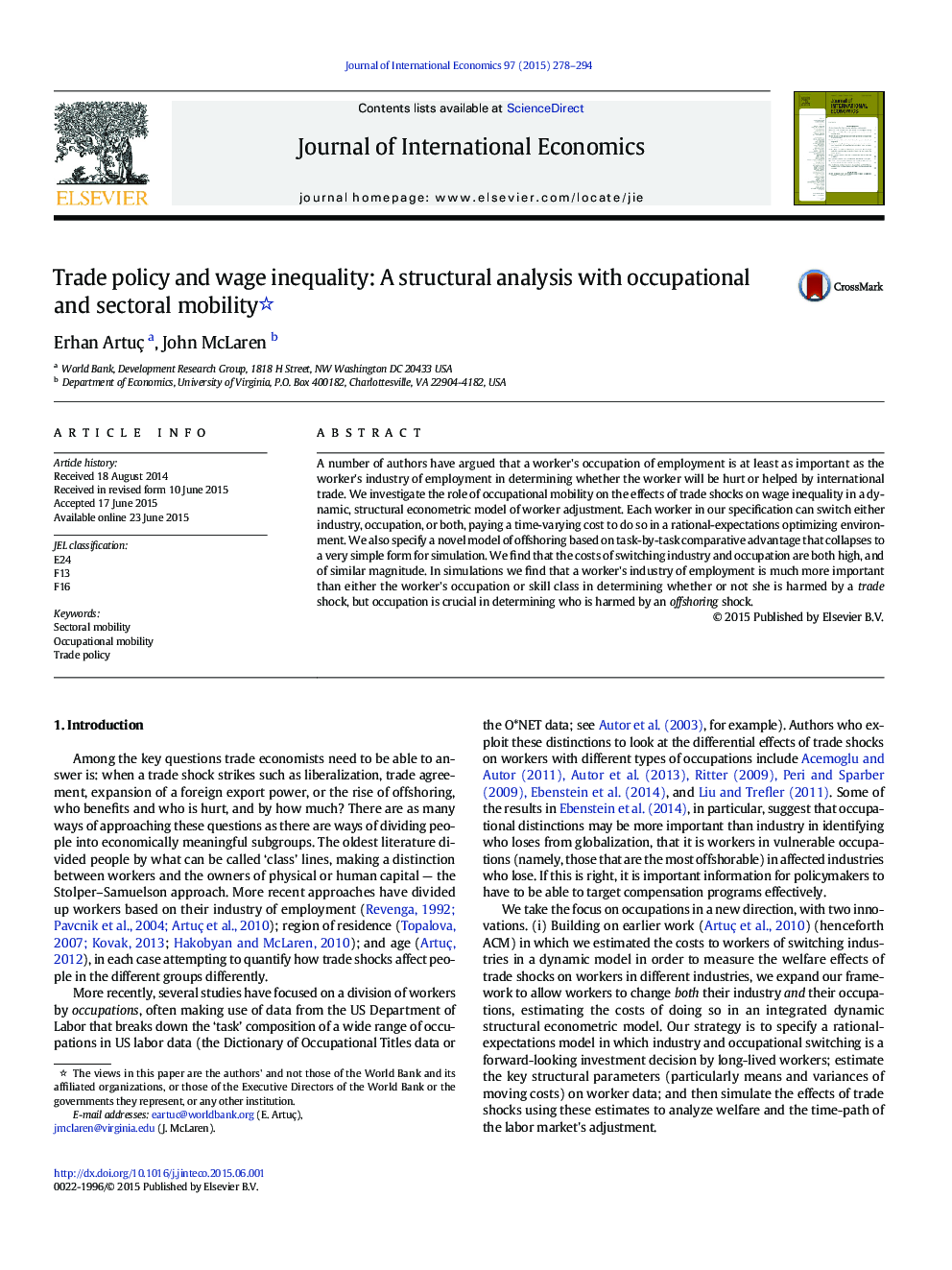| Article ID | Journal | Published Year | Pages | File Type |
|---|---|---|---|---|
| 962521 | Journal of International Economics | 2015 | 17 Pages |
•This paper estimates a structural dynamic model of labor adjustment on US data.•Switching either sector of employment or occupation is found to be fairly costly.•Switching both simultaneously is about as costly as switching only one.•The paper simulates globalization shocks with the model using these estimates.•Simulations imply that globalization tend to lower welfare for blue-collar workers.
A number of authors have argued that a worker's occupation of employment is at least as important as the worker's industry of employment in determining whether the worker will be hurt or helped by international trade. We investigate the role of occupational mobility on the effects of trade shocks on wage inequality in a dynamic, structural econometric model of worker adjustment. Each worker in our specification can switch either industry, occupation, or both, paying a time-varying cost to do so in a rational-expectations optimizing environment. We also specify a novel model of offshoring based on task-by-task comparative advantage that collapses to a very simple form for simulation. We find that the costs of switching industry and occupation are both high, and of similar magnitude. In simulations we find that a worker's industry of employment is much more important than either the worker's occupation or skill class in determining whether or not she is harmed by a trade shock, but occupation is crucial in determining who is harmed by an offshoring shock.
